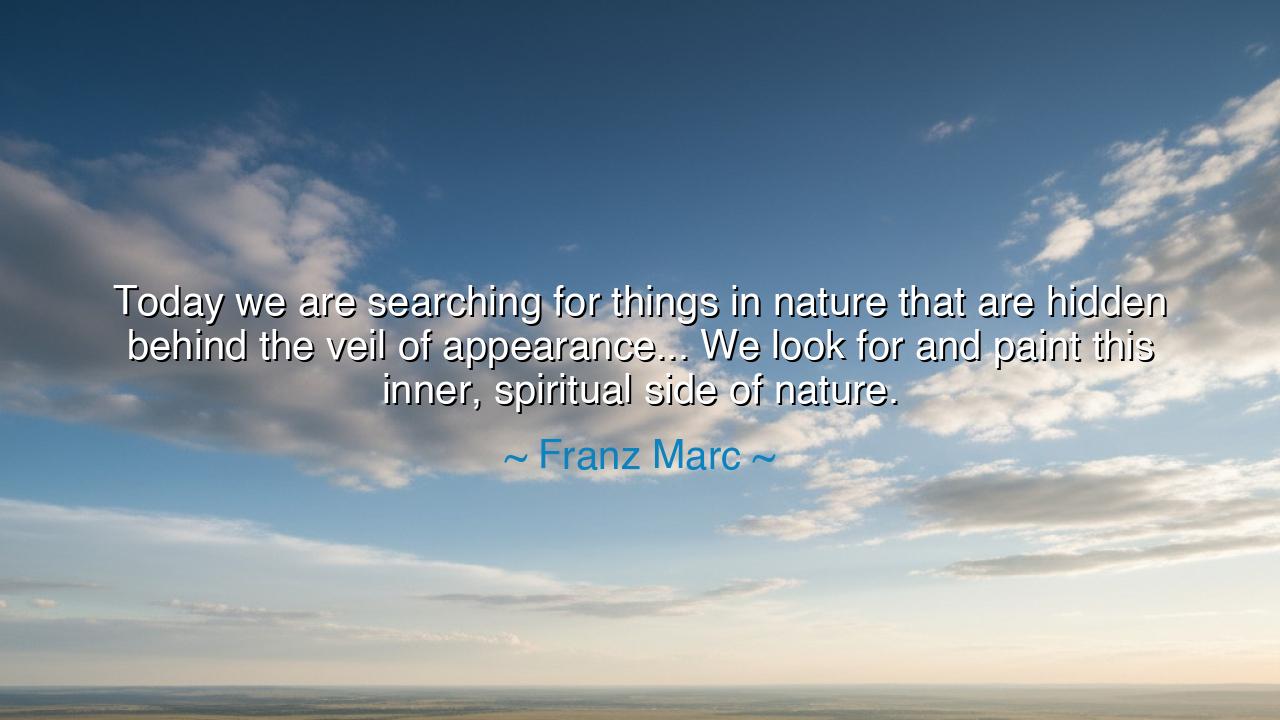
Today we are searching for things in nature that are hidden
Today we are searching for things in nature that are hidden behind the veil of appearance... We look for and paint this inner, spiritual side of nature.






The words of Franz Marc—“Today we are searching for things in nature that are hidden behind the veil of appearance... We look for and paint this inner, spiritual side of nature”—speak with the voice of a prophet of art. Here, the painter does not content himself with the mere surface of nature, with its colors and shapes, but yearns to pierce through the veil of appearance into its spiritual essence. For Marc, to paint was not to copy the outward form of the world, but to reveal its inner song, its hidden soul, that which breathes life into the mountains, the forests, the animals, and the stars.
The meaning of this vision is profound: reality is more than what the eye perceives. The artist, the seeker, the visionary must look beyond what is obvious, beyond what is “merely there,” to uncover the spiritual side that animates all creation. Marc’s art, born in the fires of the Expressionist movement, sought to depict this truth. His bold colors, his symbolic forms, his reverence for animals were all attempts to reveal that nature is alive with spirit, and that art’s highest calling is to uncover and share this hidden vitality.
This search for the essence beneath appearances has echoed throughout history. The philosopher Plato taught that the world we see is but a shadow of deeper realities, the eternal “Forms” that lie behind the veil of sense perception. In the same way, Marc’s words call us to recognize that what we behold with our eyes is but the garment of something greater—the inner fire, the divine rhythm that courses through all things. To paint or to truly see, then, is to participate in the unveiling of this mystery.
Consider also the example of Van Gogh, who in his swirling skies and burning fields did not merely paint wheat and stars, but the energy, the passion, the spiritual pulse that moved through them. He saw not a static world, but one trembling with life and meaning. Though tormented in body and mind, Van Gogh’s brush became a channel through which the inner essence of nature was revealed. In this, he shared the same path as Marc: to give vision not of surfaces, but of truths hidden behind them.
The lesson for us, O seekers of tomorrow, is to look more deeply at the world around us. Do not be deceived by the veil of appearances—the glitter of wealth, the mask of beauty, the form of things without their substance. Instead, train your inner sight to perceive the essence that lies beneath. Every tree holds a story of endurance, every river carries wisdom of persistence, every creature mirrors the mystery of life itself. To truly live is to walk as both observer and interpreter of these hidden truths.
Practically, this means cultivating both attention and reverence. When you walk in the forest, do not merely see trees—sense the silence, the patience, the quiet growth that speaks of spiritual endurance. When you look upon the sky, do not only see clouds—listen for the vastness, the eternal rhythm, the reminder of your place in a greater whole. And if you create, whether with brush, word, or deed, seek always to reveal not just the outward form, but the inward life.
Thus let it be written upon your heart: the task of the artist, and indeed of every awakened soul, is to pierce through the veil of appearance and touch the inner, spiritual side of nature. In doing so, you will not only understand the world more truly, but also yourself. For the spirit that breathes in the wind and burns in the stars is the same spirit that lives within you. To seek it is to walk the path of wisdom; to reveal it is to serve the world with truth.






AAdministratorAdministrator
Welcome, honored guests. Please leave a comment, we will respond soon